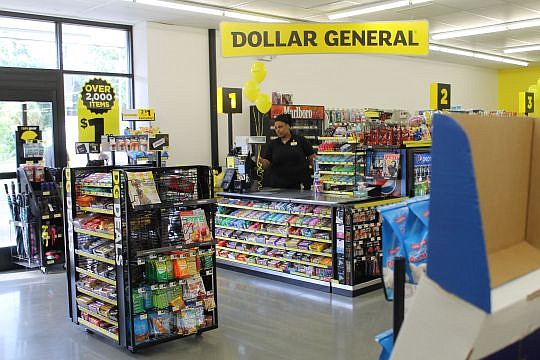
What’s with all the dollar stores?
The big three chains — Dollar General, Family Dollar and Dollar Tree — combined have filed plans within the past year to add 12 stores in the Jacksonville area.
That’s a nearly 10 percent increase in the local store count, and solidly above the chains’ already healthy national growth rate of 3-7 percent.
Cash-strapped consumers who turned to bargain hunting during the recession’s slow recovery are one of the forces driving the growth.
But company officials say their stories are more complicated than that. The companies also have been revamping their formats and products to attract convenience shoppers, pulling them away from competing store formats.
The three chains combined opened nearly 1,500 new stores in 2013 nationwide, bringing their total U.S. count to more than 24,000. A white paper by real estate consultant Colliers International in 2011 said the number of dollar stores had surpassed that of the three biggest drug store chains: Walgreens, CVS and Rite Aid.
“We believe there has been a structural change to the U.S. population as a result of the Great Recession, and people now view the way they spend money much differently,” Bryn R. Winburn, a spokeswoman for Family Dollar, wrote in an email.
The company has traditionally targeted urban customers in secondary retail markets.
“It’s en vogue to save money, and save money on the products you buy every day. … We carry products that you will find at drug and grocery, but at a better price,” she said.
Discounters picked up opportunities in a void left by mid-market retailers, flailing for customers in the downturn, said Cliff Taylor, a commercial broker who specializes in retail investments for CBRE in Jacksonville.
“You saw a lot of these big box retails go away, like Linens ‘N Things and Circuit City, who both went through bankruptcy,” he said. “Who fills some of those locations, if not discount stores like Big Lots? Landlords who might not have talked to them for what we would consider to be Class A retail space, all of a sudden started doing deals, because they were one of the only viable tenants at that time.”
But the growing ranks of value shoppers doesn’t tell the whole story.
Dollar stores are positioning themselves as successor to the old five-and-dime general stores - the small-box, quick trip place to pick up essentials. The convenience appeals to today’s consumers, as starved for time as they are for money.
“We build our customer base on value and convenience, and convenience is going to be a major reason why customers come and shop with us,” Dollar General spokeswoman Crystal Ghassemi said.
In 2008, Dollar General’s new CEO restructured the company for expansion, Ghassemi said. Attracting more convenience shoppers appears to have been part of the new plan.
Dollar General added more perishable food items to its stores, a move mirrored by Dollar Tree and Family Dollar.
“We are going to have an assortment of the products people use and replenish most often,”Ghassemi said.
Family Dollar, over the past two years alone, has increased its food assortment by more than 30 percent, Windurn said, adding brand-name products like Pepsi, Tyson chicken, Gorton’s fish sticks, and Nestle’s chocolate chip cookies.
Food is one of the reasons dollar stores began moving from inline spaces in strip shopping centers anchored by a major grocer to free-standing, outparcel buildings, Taylor said. The grocers had non-compete agreements with landlords on perishable food items.
Another reason dollar stores are moving is to improve their location.
Dollar stores have begun to compete more seriously for the quick-in, quick-out customers, picking up general merchandise on their way to or from somewhere else, Taylor said.It’s a customer that drug stores and gas stations have long served.
“If I’m Dollar General, stuck in line back behind whatever is in the strip portion of the center, and Walgreens and Gate Petroleum are across the street on a big going-home corridor — if I’m selling bread and they’re selling bread, chances are customers are getting bread from one of those two and not from me,” Taylor said. “Everyone wants to be in these highly visible, easy in, easy out, sitting-up-on-the-road locations where they offer very convenient everyday goods.”
Small box, general store with a convenient location – it’s a format that has been successful enough to draw the attention of retail giant Wal-Mart. The company announced in February it would accelerate a plan to blanket the country with scaled-down versions of its supercenters. It expects to open between 270 and 300 small stores throughout 2014, double the number previously announced.
In the race to open stores, the dollar stores project years of growth.
“We have 11,300 stores today, Ghassemi said. “Through our real estate pipeline we’ve identified an additional 14,000 locations that would be a good fit.”